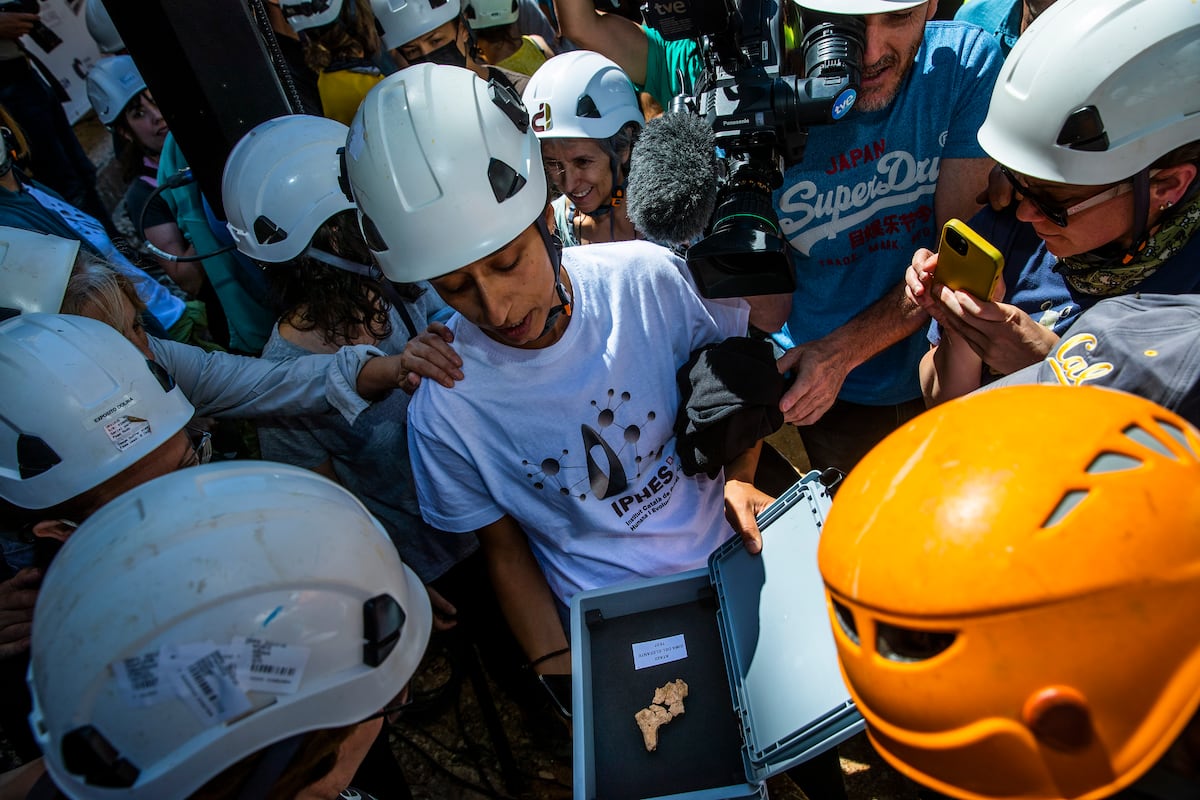The oldest human in Europe: prehistoric times make history | Sciences

Once again, prehistory makes history, and Spain stands on the international science podium with the discovery of the oldest human face ever known in the fossil record of all of Europe. If 30 years ago a fan of palaeontology had entered the terms “human”, “million-year-old” and “Europe” into a search engine, he would have found “page not found” simply because there was nothing to display. Soon, fossils dedicated to a new species, the ancestor of man, 860,000 years old, appeared in Gran Dolina de Atapuerca, as the search engine began to please us with a more friendly message announcing a “page under construction”.
A little over 15 years later, in 2007, Sima del Elefante presented a human jaw that was no more than 1.2 million years old, and we already had a full color page and even the introduction of Wikipedia at the time of the first European humans. But Atapuerca has no end. Today, the Sierra is improving its times and, as in the Ice Age marathon, breaking its own record again, presenting to the world the facial bones of an individual who inhabited our continent about 1.4 million years ago. human ancestor It was, at the time, the earliest evidence of a “modern”, flat face, more like ours than our ape-like ancestors’ face. Thanks to the new discovery, we will now be able to tell at what moment this type of human originated, and when we look at our faces, we will recognize ourselves.
But there is something else. In the context of exuberance and excellence at other Atapuerca sites, such as the Gran Dolina where a human ancestor has been found, or the exuberance at Sima de los Huesos – where as many as thirty pre-Neanderthals accumulated in what may be evidence of the earliest funerary tombs practice continued to be excavated for as long as Twenty years in a “only birds and turtles” location is the best example of the perseverance and knowledge of the team I have been fortunate enough to grow and train.
There is an undoubted luck factor in finding fossils, but this goddess of fortune finds herself with a staff of over forty years determined to leave nothing to chance. At Atapuerca, excavations are not done waiting to see if something comes out, but rather waiting when or how what we expect comes out. Four generations of trained researchers within it – geologists, archaeologists, paleontologists and geoscientists – have learned to read the signs that give us the Sierra about where and what to look for, to decipher the atavistic sounds which, as in Pedro Páramo de Juan Rulfo were “locked in the holes in the walls.” or under stones,” “sounds so clear that you can recognize them, as if they were seeping through cracks and peeling off” the limestone of their Cretaceous ancestors. There is something magical realism in the exuberance, almost obscene, of the Sierra de Atapuerca, but it’s magic implanted in the pragmatic fertilizer of a persistent and methodical commitment to science, and the prize for a far-reaching, professional career, it’s today reaping its fruits of gold and bone.
Maria Martinon He is a paleoanthropologist who directs the National Research Center on Human Evolution in Burgos.
You can follow issue in FacebookAnd the Twitter And the Instagramor sign up here to receive Our weekly newsletter.

“Award-winning zombie scholar. Music practitioner. Food expert. Troublemaker.”


/cloudfront-eu-central-1.images.arcpublishing.com/prisa/AHVYMMDSTZDTDBFNZ3LMFUOKNE.jpg)





/cloudfront-eu-central-1.images.arcpublishing.com/prisa/X33WQ3GSYFF3DBKJDAVIGHN3DA.jpg)


:quality(75)/cloudfront-us-east-1.images.arcpublishing.com/elcomercio/4RVP2XAGIRGJ5MSXST53STHBKI.jpg)